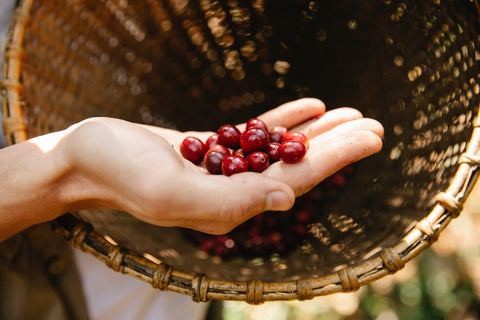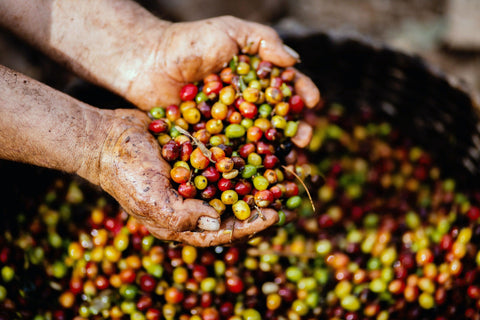
Coffee Fermentation: Carbonic Maceration
Carbonic maceration comes from winemaking. A technique that winemakers have been using to tweak and alter the flavour of the wine. This technique can be traced back to France where it was invented in the region of Beaujolais by a French scientist, Michel Flanzy in 1934.

The grapes are harvested in whole clusters. They will be placed inside an airtight steel tank which is filled up with carbon dioxide. This creates an oxygen-free environment to kickstart the fermentation.
Wines that went through Carbonic Maceration are often cited as having flavour and aroma notes of bubble gum, vanilla, cinnamon, earthy, and fruity.
Now, this sounds very similar to the Anaerobic process. It is not wrong as Carbonic Mecaration can be seen as a variation of the anaerobic process. One specification for Carbonic Maceration is the addition of Carbon Dioxide in the fermentation chamber, making a rich carbon dioxide environment for the fermentation to exist. In other words
Anaerobic = Oxygen-free Environment
Carbonic Maceration = Carbon Dioxide Rich Environment

In the coffee world, Carbonic Maceration came to the spotlight in 2015 when a barista by the name of Saša Šestić won the World Barista Championship using the coffee that was processed using this method. Together with the help of his fellow Colombian farmer, Camilo Merizalde, they set out to incorporate this wine-making process into the coffee world. What came out was a winning taste!
Saša Šestić had this to say about Carbonic Maceration :
“Imagine the best attributes of washed and natural process coffees in one cup, with amplified terroir and varietal characteristics,”

To apply this process to coffee, the harvested coffee cherries need to be fermented as a whole fruit inside an air-tight containment with 2 one-way valves. One for pumping Carbon Dioxide during the start of the process and one for letting out the gas (produced during fermentation). As a result of whole cherries being fermented without being crushed or separated from the seed, carbonic maceration can take up to days and weeks to complete fermentation.

This forced the fermentation to take place inside the skin of the fruit as opposed to the outer layer. The carbon-rich environment slows down the process of sugar breakdown which in turn makes it easier to control the acidity of the coffee. Air-tight containment, on the other hand, helps to trap all the flavour and aroma compounds back into the coffee bean as ferments.

Carbonic Mecaration coffee is often described as fresh and heavy, winey syrupy texture with flavours of red fruits like cherry and stonefruit.






